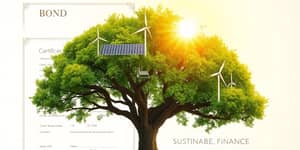In an era defined by climate crises, social inequalities and geopolitical tensions, the urgent need for inclusive, resilient financial systems has never been clearer.
Sustainable finance emerges as a powerful catalyst that transforms how capital is allocated, ensuring that profitability is harmonized with societal progress and ecological balance.
Definition and core principles
Sustainable finance integrates environmental, social, and governance considerations into financial decision-making processes, driving investments toward projects that benefit communities and ecosystems alike.
By applying integration of ESG considerations, investors align their portfolios with global goals such as the United Nations Sustainable Development Goals, fostering long-term value creation.
- Environmental: climate change adaptation, biodiversity preservation, pollution prevention, circular economy initiatives.
- Social: human rights protection, diversity and inclusion, labor relations, community engagement.
- Governance: board diversity, executive accountability, anti-corruption policies, transparent reporting.
Why sustainable finance matters
Channeling capital towards sustainable activities is vital for achieving major commitments like the Paris Agreement, the European Green Deal and the SDGs.
This approach not only mitigates environmental risks but also strengthens social cohesion, unlocks new market opportunities and builds strategic long-term environmental stewardship capacity.
By directing funds into equitable, resilient infrastructure and innovative technology, sustainable finance accelerates the transition to a fairer global economy.
Global scale and market growth
As awareness of climate change and inequality skyrockets, sustainable finance has expanded at an unprecedented pace, reshaping investment landscapes worldwide.
By 2025, global ESG assets are forecast to exceed $53 trillion, and sustainable finance markets are projected to reach $2.6 trillion by 2030, reflecting a compound annual growth rate of 23%.
Key drivers of growth
- Regulatory momentum and robust regulatory frameworks in the EU, including taxonomies and reporting mandates.
- Investor demand for competitive returns and risk mitigation as sustainable strategies prove financially resilient.
- Technological advances in data analytics, blockchain and AI that enhance impact measurement.
Leading examples of sustainable finance
The European Union has taken center stage by implementing the Green Deal and Corporate Sustainability Reporting Directive, which standardize disclosures and incentivize green investments.
Private sector champions—banks, insurers and asset managers—are committing billions to climate-aligned projects, align financial flows with broader sustainability objectives through clear SDG targets and transparent reporting.
Emerging economies like Vietnam are pioneering climate-aligned banking strategies, issuing green bonds and crafting policies that demonstrate the global reach of sustainable finance.
Implementing sustainable finance strategies
Institutions ready to embrace sustainable finance can follow a pragmatic roadmap to integrate ESG principles into their operations and product offerings.
- Set clear, measurable ESG targets and align them with core business strategies.
- Develop transparent reporting frameworks using recognized standards such as CSRD or IFRS.
- Engage stakeholders—regulators, communities, employees—to build trust and shared accountability.
Challenges and future outlook
Despite remarkable strides, sustainable finance faces hurdles. The looming threat of greenwashing undermines credibility, while diverse global standards complicate comparability.
Measuring authentic social impact remains technically demanding, and many markets require stronger institutional frameworks to mobilize private capital at scale.
However, with ongoing innovation and rising global consciousness, financial flows can realign toward genuine sustainability, driving resilient economies and equitable societies.
Looking ahead: A vision for sustainable finance
As we approach 2030, achieving the SDGs will demand an unprecedented $5 trillion in annual investments. Sustainable finance must evolve further, embracing digital tools, deeper stakeholder collaboration and innovative instruments like sustainability-linked loans.
By uniting policymakers, businesses and civil society around shared goals, we can foster a financial ecosystem that not only measures success in dollars, but also in livelihoods improved, forests preserved and communities empowered.
Ultimately, sustainable finance offers a pathway to a future where economic prosperity and planetary health advance hand in hand, ensuring a vibrant world for generations to come.
References
- https://finance.ec.europa.eu/news/sustainable-finance-2025-05-21_en
- https://unglobalcompact.org/compactjournal/sustainable-finance-explained-why-it-matters-and-how-your-business-can-lead
- https://finance.ec.europa.eu/sustainable-finance/overview-sustainable-finance_en
- https://aquila.is/knowledge-hub-article/what-is-sustainable-finance/
- https://www.grandviewresearch.com/industry-analysis/sustainable-finance-market-report
- https://extension.harvard.edu/blog/what-is-sustainable-finance-and-why-is-it-important/
- https://www.homaio.com/post/sustainable-finance-definition-challenges-responsible-investment-opportunities










